How Much Does a Doctor Visit Cost With and Without Insurance?
Without insurance, medical care can get pricy fast. Where you live, what doctor you’re going to, and what tests you need will all figure into your doctor’s visit bill. In this article, we’ll break down those costs and give you some tips for saving money.

What Goes into the Cost of a Doctor’s Visit?
Geography is one of the biggest factors in the price of a doctor’s visit. Most medical facilities pass some of their overhead expenses onto their patients. If you live somewhere with a higher cost of living, like California or New York City, you’ll likely pay more for doctors’ visits. The practice has to pay more for utilities and rent, and those costs show up in your bill. For example, Mayo Clinic’s Patient Estimates tool quotes $846 for a 60-minute office visit in Jacksonville, Florida, but $605 for the same visit in Wisconsin.
Like the cost of living, supplies and equipment will also end up on your tab. Say you need a strep test, blood draw, or Pap smear. The supplies needed for the test plus the cost of the lab fees will all figure into the price.
Bills for the same exams and procedures can also vary depending on what kind of facility you’re going to. Smaller practices and public health centers are often a lot cheaper than university or private hospital systems. This is due in part to their buildings being smaller and their overhead fees being lower.
Price of Out-of-Pocket Doctors’ Visits
The cost of a doctor’s office visit also depends on what kind of doctor and the procedure you need to have done. For example, an in-office general wellness checkup will be cheaper than a specialist procedure. If you have an emergency, an urgent care center will be much more affordable than the emergency room.
Primary Care Physician — Physical Exam
Physicals usually include blood pressure readings, cholesterol measurements, and vaccines. Prostate exams for men and Pap smears and breast exams for women are also often included. Pediatric physicals focus on the growth milestones for your child’s age. Doctors check height, weight, sleep patterns, diet, and the vaccines required by public schools.
The range for a yearly physical can be anywhere from $100 to $250 or more without insurance. A CVS Minutecare Clinic may charge just $59 for a sports physical, but not all organizations will accept this as proof of physical health.
Primary Care Physician — Procedures
On top of the base cost for physical exams, you may have extra charges for any specific tests or procedures you need. According to the Cardiometabolic Health blog, the most common procedures in primary care medicine include bloodwork, electrocardiograms, and vaccines/injections.
Bloodwork is one of the biggest cost wild cards. Certain tests can run you from as little as $10 to as much as $10,000 . Large national labs like Labcorp offer pricing on their website, so you know what to expect going in. For example, Labcorp’s General Health Blood Test , which includes a metabolic panel, complete blood count (CBC), and urinalysis, costs $78.
Electrocardiograms or EKGs check your heart health and can find cardi ac issues. This quick procedure involves monitoring your heartbeat through electrodes placed on your skin. While it’s a painless and accurate way to detect heart conditions, the costs can add up without insurance. Expect to pay as little as $410 or as much as $1700 for this procedure, depending on local prices.
Vaccines are often required before sending your kids to school. The CDC publishes a vaccination price list annually to give you an idea of what to expect. For example, they quote $19-$132 for DTaP, $21 for Hepatitis A, and $13-$65 for Hepatitis B. The COVID-19 vaccine, however, is free of cost, regardless of insurance status.
Urgent Care Visit
If you have an emergency but are stable, urgent care is much cheaper than the emergency room. According to Scripps , most urgent care centers and walk-in clinics can at least treat dehydration, cuts or simple fractures, fever, flu, strep, and UTIs. Note that if you have chest pain, a serious injury, seizures, a stroke, or pregnancy complications, you should go straight to the ER .
For a base exam at an urgent care facility, expect to pay between $100-$150 . That price will go up depending on what else you need. For example, Advanced Urgent Care in Denver quotes $80 for an X-Ray, $50 for an EKG, $135 for stitches, and $5 for a urinalysis. In comparison, expect to pay $1,000-$1,300 for the same procedures in the emergency room.
How to Lower Your Out-of-Pocket Medical Costs

Healthcare expenses may seem overwhelming without insurance. Luckily, there are many resources available to help you cover the costs.
Free & Low-Cost Immunization and Wellness Clinics
For standard vaccines and checkups, look for local free or low-cost clinics. Check out The National Association of Free and Charitable Clinics’ search tool to find a location near you. Your city’s public health department should also offer free or low-cost vaccines and basic medical care services.
Certain large vaccine manufacturers also offer vaccine programs. For example, Merck’s patient assistance program offers 37 vaccines and medicines free to eligible patients. The program includes albuterol inhalers and vaccines for Hepatitis A, Hepatitis B, MMR, and HPV.
Cash Negotiations
Most health systems offer lower rates for patients paying cash. Some even have free programs for low-income families. For example, Heritage UPC in North Carolina has a yearly membership for low-cost preventative care. In Northern California, the Sutter Health medical system offers full coverage for patients earning 400% or less of the Federal Poverty Income Guideline .
As of January 1, 2021, all hospitals in the United States now have to follow the Hospital Price Transparency Rule . That means they have to list procedure prices clearly on their website. You can also call medical billing before your appointment to discuss cash pay options.
Federal Medical Payment Support
If all else fails, there are federal programs to help you cover the cost of medical bills.
Organizations like The United Way and United for Alice offer grants for ALICE (asset-limited, income-constrained, employed) patients. These are people living above the poverty level, making them ineligible for other government programs but below the basic cost-of-living threshold.
Medicaid is available for children, pregnant women, and adults under a certain income threshold. If your income is too high to qualify for Medicaid but you can’t afford private insurance for your children, you may be eligible for the Children’s Health Insurance Program (CHIP) to cover your children’s medical care.
Use Compare.com for the Best Doctors’ Visit Prices
Navigating bills for a doctor’s visit can feel overwhelming, but Compare.com is here to help. With our price comparison tool, you can search all clinic and doctors’ office prices in your area. Compare makes sure you’re prepared for the cost of your checkup long before you schedule your appointment.

Nick Versaw leads Compare.com's editorial department, where he and his team specialize in crafting helpful, easy-to-understand content about car insurance and other related topics. With nearly a decade of experience writing and editing insurance and personal finance articles, his work has helped readers discover substantial savings on necessary expenses, including insurance, transportation, health care, and more.
As an award-winning writer, Nick has seen his work published in countless renowned publications, such as the Washington Post, Los Angeles Times, and U.S. News & World Report. He graduated with Latin honors from Virginia Commonwealth University, where he earned his Bachelor's Degree in Digital Journalism.
Compare Car Insurance Quotes
Get free car insurance quotes, recent articles.

- An annual physical is typically covered by health insurers, many of which offer it for free. Most CIGNA health plans[ 3 ] , for example, cover the entire cost of the exam. The primary factor driving cost is time spent to both see the physician and use the facility.
- Patients who are covered by health insurance, but are not entitled to a free visit under their plan, face a copay of $10 -$50 or more, or coinsurance of 10%-50% or more. According to the Agency for Healthcare Research and Quality[ 4 ] , the national average for copays is about $19 . Patients covered by United One[ 5 ] can expect a $35 copay, while those with CareFirst Blue Cross Blue Shield[ 6 ] can expect a $25 copay.
- For patients without health insurance, an annual physical typically costs $50-$200 or more. According to The Medical Expenditure Panel Survey[ 7 ] , a set of large-scale surveys on the use and cost of health services conducted by the Agency for Healthcare Research and Quality, the average price of an office visit for an uninsured patient is $199 . For example, in Minnesota's Park Nicollet Health Services hospital system, patients can expect to pay from $169 for an infant's physical to $222 for a senior's physical.
- Annual physicals, according to the Archives of Internal Medicine analysis, last an average of 23.1 minutes. But how individual doctors structure that time can vary a great deal.
- The National Library of Medicine[ 8 ] says an annual physical for an adult may include cholesterol and blood pressure screenings, vaccinations, testicular or prostate exam for men, and a breast exam for women. Doctors also frequently provide weight-loss or other lifestyle counseling.
- A child's annual visit[ 9 ] will typically focus on whether the child is meeting developmental milestones and includes evaluations of height, weight and blood pressure. The doctor may also address the child's diet, exercise habits and sleep patterns, and administer recommended vaccines.
- The Affordable Care Act[ 10 ] , signed into law in 2010, calls for health insurers to cover certain preventive screenings and services, which patients might receive during a physical, such as blood pressure and cholesterol tests, routine vaccinations, and mammograms, at no additional cost to the patient. However, "grandfathered" plans, or plans that existed before the act was passed in 2010, are exempt from many of the requirements. Moreover, additional testing and services received during the annual physical may not be covered, depending on the insurance plan.
- The American Academy of Family Physicians [ 11 ] recommends that patients read their insurance policy before the exam, so they'll know what their insurance company will pay for before they receive a service or get tested.
- For patients without health insurance, walk-in clinics, a mainstay for corporations like CVS and Walmart, offer services at significantly cheaper costs. Walmart's Get Well Stay Well visits[ 12 ] , which include some preventive and routine health services such as cholesterol and blood pressure screenings, cost $65 or less. CVS's MinuteClinics , which are staffed by nurse practitioners and physician assistants, offer physicals for adults and children for $59 .
- Children, teens and their parents may qualify for no-cost or low-cost health insurance coverage through Medicaid[ 13 ] and the Children's Health Insurance Program [ 14 ] which covers doctor visits and vaccinations. The federal government's Vaccines for Children program[ 15 ] , as well as patient assistance programs run by major pharmaceutical companies such as Merck[ 16 ] and GlaxoSmithKline[ 17 ] also help eligible patients get free vaccines.
- Some hospitals and doctors offer discounts or special programs for uninsured patients. For example, in Sutter Health's hospital network[ 18 ] in Northern California, low-income uninsured patients may qualify to receive free care, and mid-income uninsured patients are billed at rates lower than those charged to private insurance companies.
- The AAP has a referral tool to help parents locate pediatricians near them at no cost. And, though the American Medical Association cannot recommend individual physicians, it does have a DoctorFinder[ 19 ] tool to help patients search for physicians by name, location or specialty for free.
- archinte.jamanetwork.com/article.aspx?articleid=486857
- www.healthychildren.org/English/family-life/health-management/Pages/Well-Child-Car...
- www.cigna.com/customer_care/healthcare_professional/medical/pdf/807467_d_Preventiv...
- meps.ahrq.gov/mepsweb/data_files/publications/st209/stat209.pdf
- www.ehealthinsurance.com/health-insurance-companies/united-healthcare-maryland/ben...
- www.ehealthinsurance.com/health-insurance-companies/carefirst-bcbs-virginia/benefi...
- meps.ahrq.gov/mepsweb/data_files/publications/st318/stat318.shtml
- www.nlm.nih.gov/medlineplus/ency/article/002125.htm
- www.healthychildren.org/English/family-life/health-management/Pages/Routine-Doctor...
- www.healthcare.gov/law/features/rights/preventive-care/index.html
- familydoctor.org/familydoctor/en/healthcare-management/insurance-bills/health-insu...
- www.walmart.com/cp/Walmart-Clinics/1078904
- www.insurekidsnow.gov/medicaid/index.html
- www.insurekidsnow.gov/chip/index.html
- www.cdc.gov/vaccines/programs/vfc/parents/default.htm
- www.merck.com/index.html
- www.gskforyou.com/
- www.sutterhealth.org/about/ab_uninsured.html
- /extapps.ama-assn.org/doctorfinder/recaptcha.jsp
Find Urgent Care today
Find and book appointments for:.
- Urgent Care
- Pediatric Urgent Care
- COVID Testing
- COVID Vaccine
Price Transparency
How much do annual physicals cost without insurance.

- The average cost for an annual physical in the U.S. without insurance is $199
- The exact cost will depend on several factors, such as where you have your physical done, who conducts the exam, and whether you need any additional tests or treatment.
- It’s always a good idea to ask about self-pay prices before your medical appointment. Many medical providers will offer a lower rate to patients paying cash, but may not advertise it.
If you are in need of an annual physical , you may be wondering how much annual physicals cost without insurance. Without insurance, you can typically expect to pay anywhere between $50–$200 for a physical exam. The average cost for an annual physical in the U.S. without insurance is $199, according to the Agency for Healthcare Research and Quality. The exact cost will depend on several factors, such as where you have your physical done, who conducts the exam, and whether you need any additional tests or treatment.
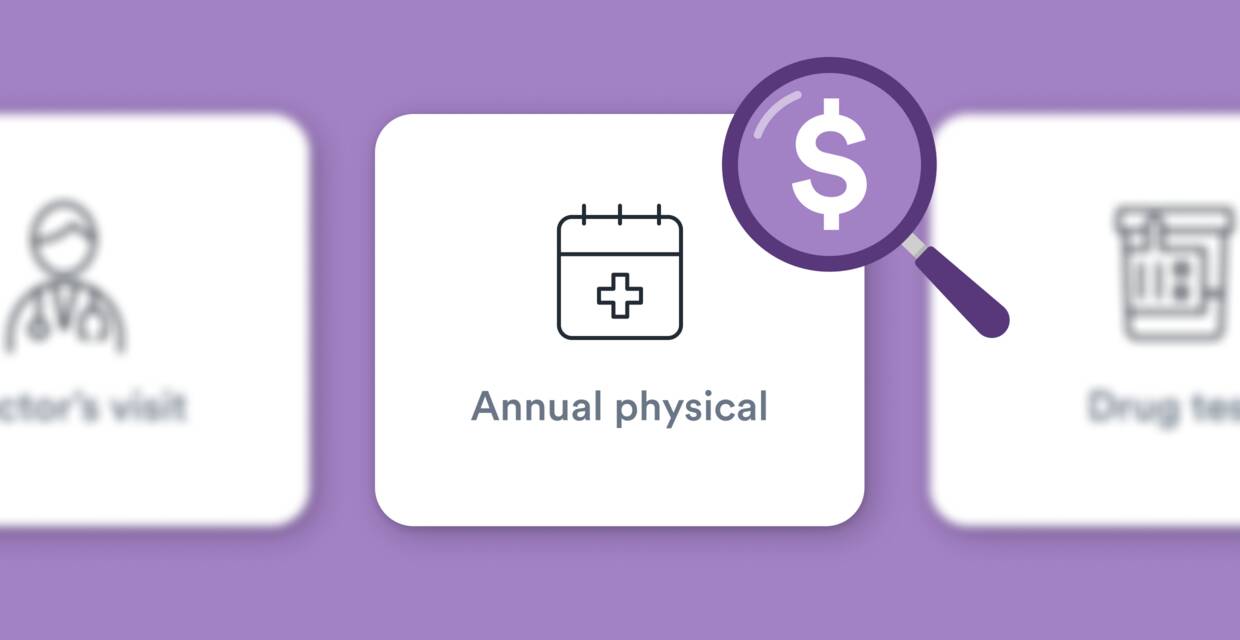
What is an annual physical?
An annual physical, also known as a wellness exam, is a yearly doctor’s appointment to evaluate your overall health and check for any emerging medical problems before they become severe. Most healthy adults may not require an annual physical, but they are recommended for anyone who has had medical issues in the past or who may be at risk of certain diseases or conditions. They are also sometimes required for employment or school.
According to the Agency for Healthcare Research, an annual physical allows your health care provider to:
- Identify any risk factors for common diseases
- Detect diseases in early stages that may not yet have apparent symptoms
- Review lifestyle habits and help you develop better habits, such as quitting smoking or exercising more
- Provide any necessary vaccinations
An annual physical also allows you to be proactive about your health and discuss any health concerns with your doctor before they develop into bigger issues. You may also want to discuss your use of any medications, vitamins, or other health measures you are currently using.
If you are relatively healthy, you can expect the cost of your annual physical to be on the lower end. However, if your doctor finds it necessary to order any tests or use additional diagnostic tools such as x-rays , these will add to the cost of your physical, notes the Agency.
What happens during an annual physical?
According to Solv’s Chief Medical Officer, Dr. Rob Rohatsch, an annual physical usually involves a physical exam that may include the following:
- Vital signs: Your doctor will take important vital signs such as blood pressure, heart rate, and blood oxygen saturation
- General appearance: Your doctor will look at your skin, posture, and other attributes to check for any new symptoms
- Mental acuity: Your doctor may have you perform some simple tests to evaluate memory and cognition
- A full physical examination of your body. This includes a full neurologic exam. Special attention is given to the cardiac exam
Men may also undergo a hernia exam or a prostate exam during their annual physical. Women may also have a breast exam and pelvic exam included in their wellness exam.
Following your physician exam, your doctor may want to order some additional tests. These may include blood work or x-rays. Blood work is often used to check organ function, electrolytes, blood sugar levels, cholesterol, and thyroid levels. In many cases, your doctor’s office will take a blood sample and send it to a lab for analysis. If this is the case, you can expect to receive a separate bill for the lab work.
An annual physical may be performed by a physician, a nurse practitioner, or a physician’s assistant.
Where can you get an annual physical?
Ideally, an annual physical should be performed by your primary care physician (PCP), according to Dr. Rohatsch. If you don’t have a primary care physician, it’s a good idea to find one. This will allow you to establish an ongoing relationship with someone aware of your medical history and can help monitor your health over time.
If necessary, you can also get an annual physical at an urgent care center or a walk-in clinic .
Paying self-pay prices for annual physicals
Most health insurance plans cover the full cost of an annual physical exam, however, additional services added onto the exam such as certain lab tests, may not be. Even if you have insurance, you may be able to save money by paying cash for these additional tests and services. Additionally, other types of physicians, including school, sports and camp physicals, are always self-pay services as they are not covered by health insurance.
It’s always a good idea to check with your insurance company ahead of time to determine whether a physical and other related services are covered under preventive care. In some cases, the exam itself may be covered, but additional tests or lab work may be applied to your deductible.
If you have a high-deductible plan and you don’t anticipate meeting your deductible for the calendar year, it may be cheaper to pay your provider directly. When billing insurance companies, medical providers often charge a higher rate. However, when billing patients directly, they are more likely to consider what patients can afford to pay out of pocket and charge accordingly. This price is known as the self-pay price and is often significantly lower than the price charged to insurance companies.
It’s always a good idea to ask about self-pay prices before your medical appointment. Based on Solv’s internal research, many medical providers will offer a lower rate to patients paying cash, but may not advertise it. If they are unable or reluctant to give you this information, be persistent. You are entitled to this information, whether or not you have insurance.
If you are paying cash for medical services, you also have a wider range of options, as you are not limited to providers in your insurance network. Take the time to find someone willing to be transparent about medical costs and with whom you feel comfortable.
Know what you’ll pay ahead of time with Solv
Solv is committed to transparency in healthcare costs with our ClearPrice™ Pledge. We have partnered with thousands of medical providers across the country who are willing to provide clear medical prices. When you book an appointment through Solv, you will be able to see clear prices for many common services. Knowing what you will pay ahead of time eliminates surprise medical bills, and makes it possible for more people to budget for necessary medical care.
To book an appointment on Solv, search our directory for a provider near you. Simply begin typing a service in the search box, and select from the options that appear. You will be provided with a list of clinics and doctor’s offices near you. In many cases, you can conveniently book an appointment online, and many of our partners offer same-day or next-day appointments.
Frequently asked questions
What is the average cost of an annual physical without insurance in the u.s., what is an annual physical and why is it important, what does an annual physical usually involve, where can i get an annual physical, are annual physicals covered by insurance, what is the benefit of paying self-pay prices for annual physicals, how can i find out about self-pay prices before my medical appointment, what is solv's clearprice™ pledge.
Michael is an experienced healthcare marketer, husband and father of three. He has worked alongside healthcare leaders at Johns Hopkins, Cleveland Clinic, St. Luke's, Baylor Scott and White, HCA, and many more, and currently leads strategic growth at Solv.

Dr. Rob Rohatsch leverages his vast experience in ambulatory medicine, on-demand healthcare, and consumerism to spearhead strategic initiatives. With expertise in operations, revenue cycle management, and clinical practices, he also contributes his knowledge to the academic world, having served in the US Air Force and earned an MD from Jefferson Medical College. Presently, he is part of the faculty at the University of Tennessee's Haslam School of Business, teaching in the Executive MBA Program, and holds positions on various boards, including chairing The TJ Lobraico Foundation.
Solv has strict sourcing guidelines and relies on peer-reviewed studies, academic research institutions, and medical associations. We avoid using tertiary references.
- Agency for Healthcare Research and Quality, MEPS Topics: Health Care Costs/Expenditures https://meps.ahrq.gov/mepsweb/data_stats/MEPS_topics.jsp?topicid=5Z-1
- primary care
- healthcare costs
- health insurance

Quality healthcare is just a click away with the Solv App
Book same-day care for you and your family
Find top providers near you
Choose in-person or video visits, manage visits on-the-go, related articles.
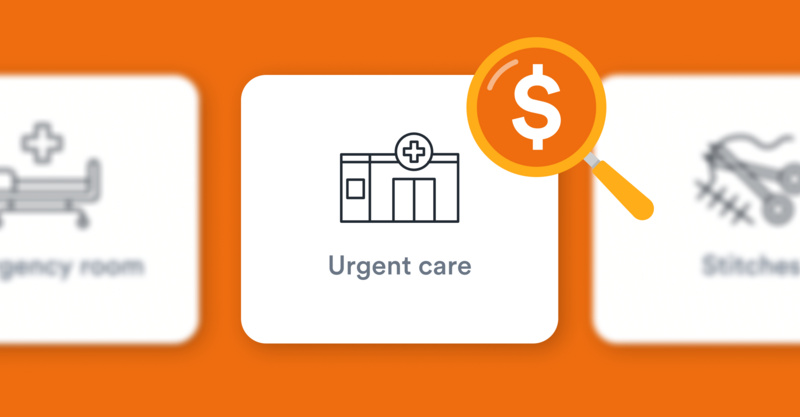
How Much Does Urgent Care Cost Without Insurance?
When you have a pressing medical issue, your first priority is getting to see a doctor, quickly. Getting an...
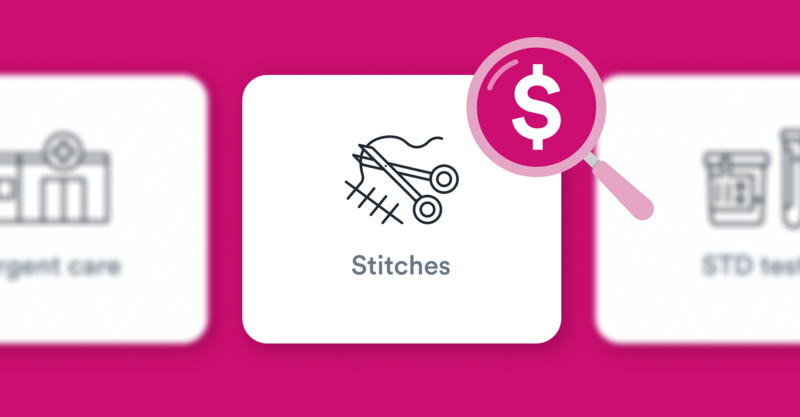
How Much Do Stitches Cost Without Insurance?
You fell and got a nasty gash that’s going to require stitches. You can easily get it stitched at an urgent care...

Cost of Blood Test Without Insurance in 2024
When you’re uninsured, you’re likely to keep a closer eye on all of your medical costs. However, staying...

Why is My Copay Higher for Urgent Care Centers?
Urgent care centers can be a huge help when you or a family member needs immediate care for an illness or...
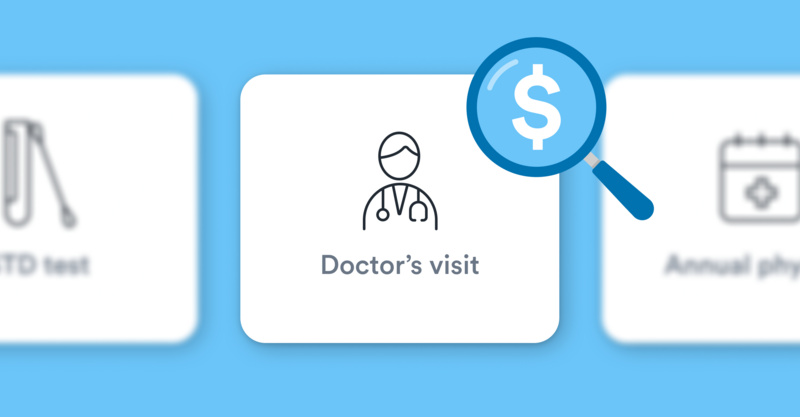
How Much Does a Doctor’s Visit Cost Without Insurance?
Going to the doctor for any reason can be expensive. Without insurance, you can expect to pay approximately...

How to Save Money on Healthcare Through Self-Pay
Americans hold a few core beliefs about how health insurance is supposed to work. They know that it’s meant to...

From Sports Physicals to Annual Check-Ups: Types of Physicals Offer...
Preventative care is just as important as reactive care—and one way to stay on top of your health is by...

Don't Wait to Get Your Sports Physical: Options for Quick and Conve...
If you're an athlete, you know how important it is to get a sports physical before participating in any type of...
![annual doctor visit cost Changes in DOT Annual Exams Coming in 2014 [VIDEO]](https://d1kve3ll6vvkpr.cloudfront.net/dir/media/W1siZiIsIjIwMTMvMDkvMTkvMTBfNTBfNTNfMzI0X2RvdF9jZXJ0aWZpZWRfZXhhbWluZXJfdmlkZW8ucG5nIl0sWyJwIiwidGh1bWIiLCI4MDB4NDE3IyJdLFsicCIsImVuY29kZSIsImpwZyIsIi1xdWFsaXR5IDk1Il1d/file.jpg?basename=Changes+in+DOT+Annual+Exams+Coming+in+2014+%5BVIDEO%5D&sha=b2d148127c4cf328)
Changes in DOT Annual Exams Coming in 2014 [VIDEO]
Nearly 4 million truck drivers are about to face a startling new reality, and most don't even realize it....

Real-Life Surprise Medical Bills: The $517 Skin Cancer Removal
As part of Solv’s ClearPriceTM initiative, our team is highlighting real-life stories about how surprise...
Related Health Concerns
COVID-19 Vaccine
Cataract Surgery
Cold Medicine
Daycare Physical
Dental Bridges
Food Allergies
Malocclusion
Pinched Nerve
Skin Cancer
Urine Culture
This site uses cookies to provide you with a great user experience. By using Solv, you accept our use of cookies.
Recent Posts

- Behavioral Health
- Children's Health (Pediatrics)
- Exercise and Fitness
- Heart Health
- Men's Health
- Neurosurgery
- Obstetrics and Gynecology
- Orthopedic Health
- Weight-loss (Bariatric) Surgery
- Women's Health

Common questions about Medicare annual wellness visits

If you are a Medicare recipient, you can take advantage of annual wellness visits. These visits are a preventive health benefit available after having Medicare Part B coverage for at least one year. All Medicare Advantage Plans are required to offer annual wellness visits for their members. A nurse or nurse practitioner reviews your health status and helps you plan for health and wellness needs.
In most cases, the annual wellness visit will be followed by a separate medical visit with your primary care professional to close any health care gaps and address any problems identified during the visit.
Here are answers to common questions about annual wellness visits.
Why are annual wellness visits important.
The annual wellness visit allows you to review your health history and identify any current or potential health risks with a health care professional. The visit enables the nurse to focus on prevention and wellness while making sure you are current on recommended immunizations and health screenings like colonoscopies or mammograms. It also allows your primary care professional more time to focus on your medical concerns and needs at a separate physical exam.
Do I need to be 65 or older to have an annual wellness visit?
You do not need to be 65 or older to qualify for an annual wellness visit as long as you've been on Medicare Part B for at least one year.
How is an annual wellness visit scheduled?
If you are due for an annual wellness visit, you may be prompted to self-schedule the visit in the patient portal . You also may call your care team and ask to be scheduled.
If your visit is with a nurse or nurse practitioner, it's recommended to schedule this visit before the visit with your primary care professional. This allows your primary care professional the chance to address any concerns mentioned during your annual wellness visit.
How can I prepare for my annual wellness visit?
You may be asked to complete some questionnaires before arriving for your appointment, which will be sent to your patient portal account. If you cannot access the questionnaires before the appointment, plan to arrive at your appointment early to complete them.
It's helpful to come prepared to your visit with this information:
- All medications, vitamins and supplements you take, including how much and how often you take them
- Additional medical records, including immunization records
- Dates of your most recent preventive services, like a colonoscopy or mammogram, if completed by another health care facility
- Family health history, with as much detail as possible
- List of medical providers and suppliers who provide you care, equipment or services
What can you expect during an annual wellness visit?
During the visit, you'll meet with a nurse or nurse practitioner to:.
- Evaluate your fall risk
- Measure your height, weight and blood pressure
- Offer referrals to other health education or preventive services
- Provide information related to voluntary advance care planning
- Screen for cognitive impairments like dementia
- Screen for depression
- Update your medical and family history
What is the cost of an annual wellness visit?
Medicare offers the visit at no cost for people who have Medicare Part B coverage for at least one year before the visit. If you are referred for other tests or services, they will be billed to your insurance. If you have a separate visit with your primary care professional following your annual wellness visit, you or your insurance carrier will be responsible for the cost of that visit.
Robert Stroebel, M.D. , is a Community Internal Medicine, Geriatric and Palliative Care physician at Mayo Clinic Primary Care in Rochester and Kasson, Minnesota.
Related Posts

Medicare Interactive Medicare answers at your fingertips -->
Annual wellness visit, preventive services.
You must be logged in to bookmark pages.
Email Address * Required
Password * Required
Lost your password?
The Annual Wellness Visit (AWV) is a yearly appointment with your primary care provider (PCP) to create or update a personalized prevention plan. This plan may help prevent illness based on your current health and risk factors. Keep in mind that the AWV is not a head-to-toe physical. Also, this service is similar to but separate from the one-time Welcome to Medicare preventive visit .
Eligibility
Medicare Part B covers the Annual Wellness Visit if:
- You have had Part B for over 12 months
- And, you have not received an AWV in the past 12 months
Additionally, you cannot receive your AWV within the same year as your Welcome to Medicare preventive visit.
Covered services
During your first Annual Wellness Visit, your PCP will develop your personalized prevention plan. Your PCP may also:
- Check your height, weight, blood pressure, and other routine measurements
- This may include a questionnaire that you complete before or during the visit. The questionnaire asks about your health status, injury risks, behavioral risks, and urgent health needs.
- This includes screening for hearing impairments and your risk of falling.
- Your doctor must also assess your ability to perform activities of daily living (such as bathing and dressing), and your level of safety at home.
- Learn about your medical and family history
- Medications include prescription medications, as well as vitamins and supplements you may take
- Your PCP should keep in mind your health status, screening history, and eligibility for age-appropriate, Medicare-covered preventive services
- Medicare does not require that doctors use a test to screen you. Instead, doctors are asked to rely on their observations and/or on reports by you and others.
- Screen for depression
- Health education and preventive counseling may relate to weight loss, physical activity, smoking cessation, fall prevention, nutrition, and more.
AWVs after your first visit may be different. At subsequent AWVs, your doctor should:
- Check your weight and blood pressure
- Update the health risk assessment you completed
- Update your medical and family history
- Update your list of current medical providers and suppliers
- Update your written screening schedule
- Screen for cognitive issues
- Provide health advice and referrals to health education and/or preventive counseling services
If you qualify, Original Medicare covers the Annual Wellness Visit at 100% of the Medicare-approved amount when you receive the service from a participating provider . This means you pay nothing (no deductible or coinsurance ). Medicare Advantage Plans are required to cover AWVs without applying deductibles, copayments, or coinsurance when you see an in-network provider and meet Medicare’s eligibility requirements for the service.
During the course of your AWV, your provider may discover and need to investigate or treat a new or existing problem. This additional care is considered diagnostic, meaning your provider is treating you because of certain symptoms or risk factors. Medicare may bill you for any diagnostic care you receive during a preventive visit.
Update your browser to view this website correctly. Update my browser now
What is the difference between a physical exam and a Medicare Wellness Visit?
Published by Medicare Made Clear®

The difference between a physical exam and a Medicare Wellness Visit is basically the difference between your doctor focusing on what’s wrong versus on what’s right. Each is important, depending on the situation.
When you’re sick or in pain, you want to get better. A physical exam helps your doctor figure out what the problem is and what needs to be done.
When you’re healthy and feeling good, you want to stay that way. A wellness exam helps your doctor understand what’s working for you and how to best support your continued health and well-being.
Your doctor performs specific tasks in each of these two exams in order to achieve its purpose. See below for a chart that lists some of the services that may be covered in a physical exam versus a Medicare wellness visit, or that may be covered in both.
NOTE: this chart is not complete and you should ask your physician what is covered and your Medicare plan provider to understand how different health services may or may not be covered.
What’s included in a physical exam?
An annual physical exam is an assessment of your body’s health. The primary purpose is to look for health problems.
During the exam, your doctor uses his or her senses – mainly sight, touch and hearing – to gauge how your body is performing. Based on what’s learned, your doctor may ask you to have tests to discover or rule out possible health problems.
The list below shows some of the things your doctor may do during a physical exam.
Visually check your body overall for signs of existing health issues
Look into your eyes, ears, nose and throat for potential problems
Listen to your heart and lungs to detect irregular sounds
Touch parts of your body to feel for abnormalities
Test your motor function and reflexes
Perform pelvic and rectal exams
Measure your height, weight and blood pressure
As a rule, Medicare does not cover an annual physical. The exam and any tests your doctor orders are separate services, and you may have costs related to each depending on your Medicare plan.
What’s included in a Medicare Wellness Visit?
A Medicare Wellness Visit, also called a wellness exam, is an assessment of your overall health and well-being. The primary purpose is prevention – either to develop or update your personalized prevention plan. Medicare covers a wellness visit once every 12 months (11 full months must have passed since your last visit), and you are eligible for this benefit after you have had Part B for at least 12 months.
During the exam, your primary care provider combines information from the visit with your medical record to gauge your risk for common preventable health problems such as heart disease, cancer and type 2 diabetes. Based on what’s learned, your doctor creates your personal prevention plan with a checklist of screenings you need to have.
The list below shows some of the things your doctor may do during a wellness exam.
Review your health risk assessment (questions you answer about your health)
Confirm your medical and family history
Record your current prescriptions and providers
Measure and document your height, weight, and blood pressure
Look for signs of memory loss, dementia, or frailty
Document your health risk factors and treatment options
Provide personalized health advice
Develop a screening schedule (like a checklist) for the preventive services recommended for you
Medicare Part B covers an annual wellness exam and many preventive screenings with no copay or deductible. However, you may have to pay a share of the cost for certain recommended tests or services. And while it’s not mandatory, there are very good reasons to have a wellness exam every year.
What is a "Welcome to Medicare" visit?
Medicare Part B covers a "Welcome to Medicare" visit. This visit is also called an Initial Preventive Physical Exam (IPPE). You are eligible for this benefit once within the first 12 months you are enrolled in Part B
What to expect at your "Welcome to Medicare" visit
During the visit your provider will:
Record and evaluate your medical and family history, current health conditions and prescriptions.
Check your blood pressure, vision, weight and height to get a baseline for your care.
Make sure you are up-to-date with preventive screenings and services, such as cancer screenings and shots.
Order further tests, depending on your general health and medical history.
You do not pay a copayment for your "Welcome to Medicare" visit. The Part B deductible does not apply to the cost of the visit either.
After the visit, your provider will give you a personalized prevention plan or checklist with the screenings and preventive services recommended for you. These services are not part of the "Welcome to Medicare" visit. You may have to pay a co-payment for the recommended services when you get them. Your Part B deductible may also apply.
Learn more about what to expect at your Medicare wellness visit.
About Medicare Made Clear
Medicare Made Clear brought to you by UnitedHealthcare provides Medicare education so you can make informed decisions about your health and Medicare coverage.
- Introduction to Medicare
- Types of plans

Get the latest
Boost your Medicare know-how with the reliable, up-to-date news and information delivered to your inbox every month.
*All fields required
More articles
Find a plan.
Enter your ZIP code for plans in your area
Call UnitedHealthcare toll-free at
1-833-301-2052, TTY 711
Hours: 8 a.m. - 8 p.m. 7 days a week
Meet with us
Make an appointment with a licensed insurance agent/producer in your area
Take control of your money! Save, budget and navigate your finances easier with AARP Money Map.
AARP daily Crossword Puzzle
Hotels with AARP discounts
Life Insurance
AARP Dental Insurance Plans
AARP MEMBERSHIP
AARP Membership — $12 for your first year when you sign up for Automatic Renewal
Get instant access to members-only products, hundreds of discounts, a free second membership, and a subscription to AARP the Magazine. Find how much you can save in a year with a membership. Learn more.
- right_container
Work & Jobs
Social Security
AARP en Español
- Membership & Benefits
- AARP Rewards
- AARP Rewards %{points}%
Conditions & Treatments
Drugs & Supplements
Health Care & Coverage
Health Benefits

AARP Hearing Center
Advice on Tinnitus and Hearing Loss

Get Happier
Creating Social Connections

Brain Health Resources
Tools and Explainers on Brain Health

Your Health
8 Major Health Risks for People 50+
Scams & Fraud
Personal Finance
Money Benefits

View and Report Scams in Your Area

AARP Foundation Tax-Aide
Free Tax Preparation Assistance

AARP Money Map
Get Your Finances Back on Track

How to Protect What You Collect
Small Business
Age Discrimination

Flexible Work
Freelance Jobs You Can Do From Home

AARP Skills Builder
Online Courses to Boost Your Career

31 Great Ways to Boost Your Career

ON-DEMAND WEBINARS
Tips to Enhance Your Job Search

Get More out of Your Benefits

When to Start Taking Social Security

10 Top Social Security FAQs

Social Security Benefits Calculator

Medicare Made Easy
Original vs. Medicare Advantage

Enrollment Guide
Step-by-Step Tool for First-Timers

Prescription Drugs
9 Biggest Changes Under New Rx Law

Medicare FAQs
Quick Answers to Your Top Questions
Care at Home
Financial & Legal
Life Balance

LONG-TERM CARE
Understanding Basics of LTC Insurance

State Guides
Assistance and Services in Your Area

Prepare to Care Guides
How to Develop a Caregiving Plan

End of Life
How to Cope With Grief, Loss
Recently Played
Word & Trivia
Atari® & Retro
Members Only
Staying Sharp
Mobile Apps
More About Games

Right Again! Trivia

Right Again! Trivia – Sports

Atari® Video Games

Throwback Thursday Crossword
Travel Tips
Vacation Ideas
Destinations
Travel Benefits

Outdoor Vacation Ideas
Camping Vacations

Plan Ahead for Summer Travel

AARP National Park Guide
Discover Canyonlands National Park

History & Culture
8 Amazing American Pilgrimages
Entertainment & Style
Family & Relationships
Personal Tech
Home & Living
Celebrities
Beauty & Style

Movies for Grownups
Summer Movie Preview

Jon Bon Jovi’s Long Journey Back

Looking Back
50 World Changers Turning 50

Sex & Dating
Spice Up Your Love Life

Friends & Family
How to Host a Fabulous Dessert Party

Home Technology
Caregiver’s Guide to Smart Home Tech

Virtual Community Center
Join Free Tech Help Events

Create a Hygge Haven

Soups to Comfort Your Soul

AARP Solves 25 of Your Problems
Driver Safety
Maintenance & Safety
Trends & Technology

AARP Smart Guide
How to Clean Your Car

We Need To Talk
Assess Your Loved One's Driving Skills

AARP Smart Driver Course

Building Resilience in Difficult Times

Tips for Finding Your Calm

Weight Loss After 50 Challenge

Cautionary Tales of Today's Biggest Scams

7 Top Podcasts for Armchair Travelers

Jean Chatzky: ‘Closing the Savings Gap’

Quick Digest of Today's Top News

AARP Top Tips for Navigating Life

Get Moving With Our Workout Series
You are now leaving AARP.org and going to a website that is not operated by AARP. A different privacy policy and terms of service will apply.
Go to Series Main Page
Does Medicare cover annual physical exams?
Though Medicare doesn’t pay for the type of comprehensive exam that most people think of as a “physical,” it does cover a one-time Welcome to Medicare checkup during your first year after enrolling in Part B. After that, it covers annual wellness visits scheduled to keep track of your health.
Medicare defines a routine physical exam as one that’s performed without a relationship to treatment or diagnosis of a specific illness, symptom, complaint or injury.

Get instant access to members-only products and hundreds of discounts, a free second membership, and a subscription to AARP the Magazine. Find out how much you could save in a year with a membership. Learn more.
Federal law specifically prohibits Medicare from covering routine physical exams. However, Medicare coverage has expanded to pay for the following checkups and preventive care in specific circumstances:
- The one-time Welcome to Medicare checkup , introduced in 2005, is covered in the first 12 months after signing up for Medicare Part B .
- Medicare covers an annual wellness visit every 12 months after your first year with Medicare Part B. This annual visit was added to Medicare Part B coverage by the Affordable Care Act and became available without deductibles or copayments starting in 2011.
- Coverage for several preventive services without any out-of-pocket costs also was added through the Affordable Care Act, including many screenings and vaccines. You may need to meet age or risk requirements for some of these services to be covered.
How is a physical different from Medicare’s wellness exam?
In an annual physical, a doctor examines you, may do bloodwork and other tests and looks for problems even though you don’t have a specific complaint or risk.
The Welcome to Medicare checkup and annual wellness visit focus more on preventive care. Your doctor can review your risk factors, develop a personalized health plan for you, check that you’re up to date with preventive tests such as cancer screenings and flu shots and may refer you for other tests. The items included in the two types of visits are slightly different.
The Welcome to Medicare checkup is an introduction to Medicare and its covered benefits and focuses on health promotion, disease prevention and detection to help you stay well. It’s an opportunity for your doctor to assess your health and provide a plan for care. Your doctor may do the following during this visit:
- Ask about your personal and family health history.
- Assess your potential for depression.
- Calculate your body mass index (BMI) and document your blood pressure, height and weight.
- Check risk factors that could indicate serious illnesses.
- Determine your ability to function independently and your level of safety, such as how well you perform activities of daily living and your risk of falls.
- Offer to talk about advance directives , such as a health care proxy that lets you designate someone else to make medical decisions on your behalf if you can’t. They could cover a living will that specifies your preferences for medical treatment at the end of your life.
- Provide a simple vision test.
- Recommend tests, screenings and other preventive services that you may need to stay healthy.
- Review any current opioid prescriptions and screen for potential substance use disorders.

AARP NEWSLETTERS

%{ newsLetterPromoText }%
%{ description }%
Privacy Policy
ARTICLE CONTINUES AFTER ADVERTISEMENT
The annual wellness visit provides a snapshot of your current health as a baseline for future yearly visits and is intended as a preventive service — a way of catching potentially serious health issues early.
This visit includes some of the same elements as the Welcome to Medicare checkup. For example, your doctor will review your medical history, record your vital information and give you an opportunity to talk about advance directives. Your doctor may also do the following during this annual visit:
- Create a screening checklist for recommended preventive services for the upcoming year.
- Look at health risks and treatment options.
- Perform a cognitive assessment to look for signs of dementia.
- Provide personalized health advice.
- Review your current providers and prescriptions.
- Study risk factors for opioid problems if you have a prescription for opioids, and screen for potential substance use disorders.
How much do I pay for a Medicare wellness visit?
The Welcome to Medicare and annual wellness visits are covered in full by Medicare Part B without any out-of-pocket costs if you use a doctor or other qualified health care provider who accepts assignment . You don’t need the Welcome to Medicare visit to qualify for later annual wellness visits, but know that Medicare won’t pay for a wellness visit during the first 12 months you have Part B.
During these visits, the provider may order additional tests or procedures that may be subject to Medicare’s deductibles, copayments or coinsurance .
Keep in mind
Be specific. Make sure to ask for the Welcome to Medicare checkup or annual wellness visit for Medicare to cover it. Otherwise, you may have to pay for the visit.
Medicare Advantage is different. If you have a Medicare Advantage plan rather than original Medicare, you may need to use an in-network provider for the wellness visits to be covered. Some Medicare Advantage plans cover annual physicals in addition to the wellness visit.
Updated February 24, 2023
Discover AARP Members Only Access
Already a Member? Login
More on health
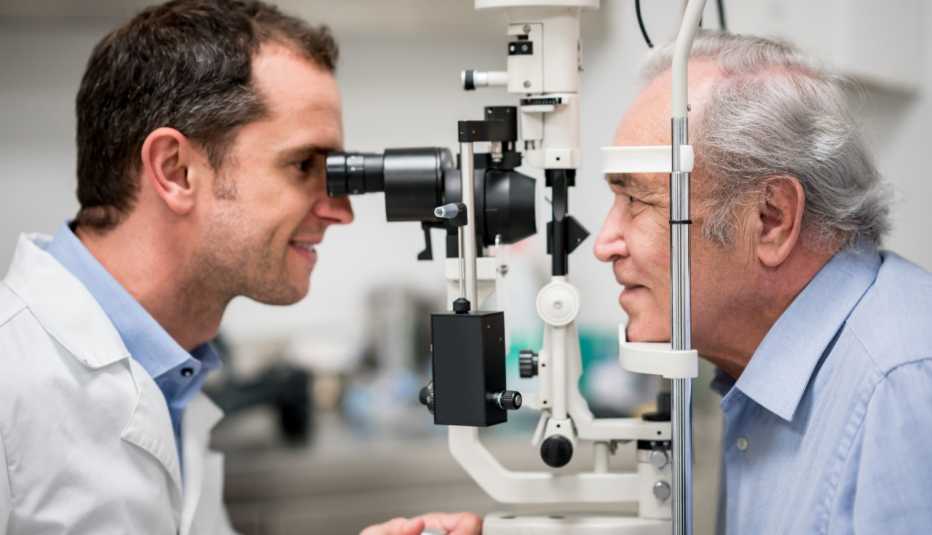
10 Things Medicare Doesn’t Cover
You’ll need to plan ahead to pay for some common medical expenses

Understanding Medicare’s Options: Parts A, B, C and D

What Is an Advance Beneficiary Notice in Medicare?
An ABN warns that Medicare might not cover a service
AARP Value & Member Benefits

Carrabba's Italian Grill®
10% off dine-in or curbside carryout orders placed by phone

AARP Travel Center Powered by Expedia: Hotels & Resorts
Up to 10% off select hotels

ADT™ Home Security
Savings on monthly home security monitoring

AARP® Staying Sharp®
Activities, recipes, challenges and more with full access to AARP Staying Sharp®
SAVE MONEY WITH THESE LIMITED-TIME OFFERS
Cost of annual physical exam by state
Typical comprehensive wellness checkup for a new patient (1st time visit with the provider), including some of the most common labs and an EKG. Note that this is informational only, actual coverage/benefits will be based on the services listed on the itemized bill.
- Connecticut
- Massachusetts
- Mississippi
- New Hampshire
- North Carolina
- North Dakota
- Pennsylvania
- Rhode Island
- South Carolina
- South Dakota
- West Virginia
* Savings estimate based on a study of more than 1 billion claims comparing self-pay (or cash pay) prices of a frequency-weighted market basket of procedures to insurer-negotiated rates for the same. Claims were collected between July 2017 and July 2019. R.Lawrence Van Horn, Arthur Laffer, Robert L.Metcalf. 2019. The Transformative Potential for Price Transparency in Healthcare: Benefits for Consumers and Providers. Health Management Policy and Innovation, Volume 4, Issue 3.
Sidecar Health offers and administers a variety of plans including ACA compliant and excepted benefit plans. Coverage and plan options may vary or may not be available in all states.
Your actual costs may be higher or lower than these cost estimates. Check with your provider and health plan details to confirm the costs that you may be charged for a service or procedure.You are responsible for costs that are not covered and for getting any pre-authorizations or referrals required by your health plan. Neither payments nor benefits are guaranteed. Provider data, including price data, provided in part by Turquoise Health.
The site is not a substitute for medical or healthcare advice and does not serve as a recommendation for a particular provider or type of medical or healthcare.
"Welcome to Medicare" preventive visit
Medicare Part B (Medical Insurance) covers one “Welcome to Medicare” preventive visit within the first 12 months you have Part B. This "Welcome to Medicare" visit isn't a physical exam.
Your costs in Original Medicare
You pay nothing for the visit if your doctor or other health care provider accepts assignment . The Part B deductible doesn’t apply.
However, you may have to pay coinsurance , and the Part B deductible may apply if your doctor or other health care provider performs additional tests or services during the same visit that Medicare doesn't cover under this preventive benefit. If Medicare doesn't cover the additional tests or services (like a routine physical exam), you may have to pay the full amount.
Frequency of services
Your doctor or other health care provider may recommend you get services more often than Medicare covers. Or, they may recommend services that Medicare doesn’t cover. If this happens, you may have to pay some or all of the costs. Ask questions so you understand why your doctor is recommending certain services and if, or how much, Medicare will pay for them.
During this visit, your doctor or other health care provider will:
- Review your medical and social history related to your health.
- Give you information about preventive services, including certain screenings, shots or vaccines (like flu, pneumococcal, and other recommended immunizations).
- Take height, weight, and blood pressure measurements.
- Give you referrals for other care as needed.
- Calculate your body mass index (BMI).
- Give you a simple vision test.
- Review your potential risk for depression.
- Offer to talk with you about creating advance directives.
- A written plan (like a checklist) letting you know what screenings, shots, and other preventive services you need. Get details about coverage for screenings, shots, and other preventive services.
Things to know
When you make your appointment, let your doctor’s office know you would like to schedule your “Welcome to Medicare” preventive visit. Bring the following to your appointment:
- Medical records, including immunization records.
- Family health history.
- A list of any prescription drugs, over-the-counter drugs, vitamins, and supplements that you currently take, how often you take them, and why.
Related resources
- Medicare & You: women's health (video)
- Yearly "Wellness" visits
Is my test, item, or service covered?
Doctor Visits
Find and Access Preventive Services

Take Action
Preventive services include health care like screening tests, checkups, and vaccines. Unlike the care you get when you’re sick or managing a long-term condition, preventive care can help stop you from getting sick in the first place — or it can find health problems before they get worse, even before you have symptoms.
Why do I need preventive care?
There are lots of great reasons to get preventive care. It can:
- Save your life. Screening tests and checkups can find health problems early, when they may be easier to treat. This includes serious diseases like cancer.
- Prevent disease . Some preventive services can keep health problems from developing. This includes vaccines and screenings for certain cancers, like cervical cancer.
- Help you save money . Finding and treating health problems early can help you avoid costly medical bills down the road. Plus, most insurance plans cover preventive services, and there are free or low-cost options if you don’t have insurance.
- Offer peace of mind. Regular checkups are a chance for you to share concerns and ask questions about your health — and to get support from a doctor or other health care professional.
How to Get Preventive Care
Make an appointment with your doctor..
Talking with your doctor or nurse is a great first step to getting preventive care. They can tell you which screenings, vaccines, or other services you need — and answer any questions you may have. Together, you can make a plan to protect your health.
Looking for a new doctor or nurse? Use these tips to find the right fit .
Find free or low-cost preventive care.
Most health insurance plans cover preventive services at no cost to you — usually without a copay or deductible.
But even if you don’t have health insurance, you can still get free or low-cost preventive care. Try these tips:
- Visit a community health center or clinic. Community health centers and clinics can offer affordable — or even free — preventive care. Find a health center near you .
- Contact your local health department. Many health departments offer free health services, like flu vaccines, to people in the community. Your health department can also give advice on where to find additional free or low-cost health care services in your area. Use this interactive map to find your local health department.
- Look for volunteer clinics. Some communities offer free clinics run by volunteers for people who don’t have health insurance. Find a volunteer clinic near you.
- Ask your local hospital about free screenings. Many hospitals offer free screening events. Contact your hospital’s customer service or community outreach department to learn what options are available.
If you’re getting health care through the Indian Health Service (IHS), use this tool to find preventive care near you. And if you’re a Veteran, you can get care at a VA location in your area.
Look for free screening and testing programs for specific diseases.
There are also some free or low-cost programs to help you get screened or tested for specific diseases. For example:
- Screening for breast and cervical cancer: National Breast and Cervical Cancer Early Detection Program (NBCCEDP)
- Testing for HIV, STIs (sexually transmitted infections), and hepatitis: Get Tested search tool
Learn about insurance coverage for preventive services.
If you have private health insurance:.
Private health insurance means you’re getting your insurance through an employer or the Health Insurance Marketplace. Under the Affordable Care Act, private health insurance plans must cover many preventive services. Depending on your insurance plan and other factors like your age, you may be able to get these and other preventive services at no cost to you:
- Blood pressure , diabetes , and cholesterol tests
- Many cancer screenings, including mammograms and colonoscopies
- Counseling on topics like quitting smoking , losing weight , eating healthy , treating depression , and drinking less alcohol
- Vaccines to protect against diseases like the flu, whooping cough, measles, and meningitis
- Counseling, screening, and vaccines to help you have a healthy pregnancy
- Regular well-baby and well-child visits
Keep in mind that you may be charged a portion of the cost if a preventive service isn’t the main reason for your doctor’s visit or if you’re seeing an out-of-network provider. To avoid unexpected medical bills, ask your doctor before your appointment what services will be covered — or check with your insurance company.
To learn more, check out these resources about:
- Free preventive care covered by the Affordable Care Act
- How the Affordable Care Act protects you
- Understanding your health insurance and how to use it [PDF - 698 KB]
If you have Medicaid:
Medicaid covers certain preventive services at no cost, like vaccines and recommended screenings and tests. It also covers counseling to help you manage long-term health conditions and support healthy changes, like quitting smoking. You can:
- Find out more about getting preventive care through Medicaid
- Contact your state’s Medicaid agency for detailed information
If you have Medicare:
Medicare also covers certain preventive services at no cost. To learn about Medicare and preventive care:
- Browse this list of covered services
- Use this tool to see what Medicare covers
If you’re uninsured, explore options for getting health insurance.
There are different options for getting health insurance coverage — and it may be more affordable than you think. To get started, you can:
- Check to see if you’re eligible for Medicaid. The Medicaid program provides health insurance for families with low incomes, pregnant people, people with disabilities, and people in certain other groups. Find Medicaid coverage in your state.
- Enroll your children in CHIP. The Children’s Health Insurance Program (CHIP) covers children in families that earn too much money to qualify for Medicaid but not enough to afford private health insurance. Learn more about CHIP.
- Explore the Health Insurance Marketplace. The Marketplace offers health insurance plans for anyone who needs it. How much you’ll pay for coverage depends on how much money your family earns. Read this quick guide to Marketplace coverage or find local help.
Content last updated June 7, 2024
Reviewer Information
This information on preventive services was adapted from materials from the U.S. Department of Health and Human Services and the Centers for Medicare & Medicaid Services.
Reviewed by: U.S. Department of Health and Human Services’ Office of Disease Prevention and Health Promotion Review Team.
You may also be interested in:

Get Screened

Take Charge of Your Health Care

Get Your Medicare Wellness Visit Every Year
The office of disease prevention and health promotion (odphp) cannot attest to the accuracy of a non-federal website..
Linking to a non-federal website does not constitute an endorsement by ODPHP or any of its employees of the sponsors or the information and products presented on the website.
You will be subject to the destination website's privacy policy when you follow the link.
Wellness & You
Main navigation.
- Aetna education
- Healthy all year
- Live well guide
- Benefit spotlight
Get the most out of your annual visits
Taking advantage of these Aetna Medicare Advantage benefits can help you plan ahead for a healthier, happier year.

Did you know you’re eligible for a one-time “Welcome to Medicare” visit within your first 12 months of having Medicare Part B? This visit is to establish a relationship with a primary care physician (PCP) and a baseline for your health. You pay nothing for this visit. Be sure you tell the doctor’s office you are making your “Welcome to Medicare” appointment when you set up your visit.
Another important tool for staying on top of your health: the Annual Wellness Visit. This yearly visit is covered annually, starting 12 months after your “Welcome to Medicare” appointment. Here’s how to make the most of these covered appointments.
Know what to expect Think of the “Welcome to Medicare” visit and Annual Wellness Visits as check-ins, not physical exams. You will get weighed and have your blood pressure measured. But mostly, you and your PCP will talk about developing a personalized preventative plan.
Make a list of topics to discuss Write down any questions or concerns you have about your health before you go. We all forget things in the moment — having a list can help keep you on track.

Log in to your secure member website to file a claim, check on a claim status, file an appeal and more.
Bring a caregiver or friend Before your appointment, check if a companion can join you. Having someone come along can help calm your nerves. And your loved one might ask questions or pick up information that you’ve missed.
Find out about vaccines Check to see whether you’re up to date on shots or boosters such as flu, pneumonia, TDAP or shingles.
Talk about health screenings Ask your provider if you are due for any screenings, such as a colonoscopy, mammogram or hearing or vision exam. If possible, book the appointments before you leave the doctor’s office to get them on your calendar.
Review your medications Go over any medications that you are taking on a regular basis with your PCP. They can help make sure you’re taking what you need — and not what you don’t.
Check out our new Health Trends report! We studied the future of healthy aging to learn about what we can do better to serve the 65-and-older population. Read the report to learn more.
Related articles

Make the most of your plan web page

Find local support for healthy living
Have questions we can help..
Call us at 1-833-570-6670 (TTY: 711) between 8 AM and 8 PM, seven days a week. Or visit AetnaMedicare.com
Tuition and fees: the big ticket item
Beyond tuition: other expenses to consider, financial aid options, reducing costs: tips and strategies, the cost of medical school: a reality check.
Affiliate links for the products on this page are from partners that compensate us (see our advertiser disclosure with our list of partners for more details). However, our opinions are our own. See how we rate student loans to write unbiased product reviews.
- Going to medical school in the United States can be extremely expensive.
- From scholarships to loans, there are plenty of options to pay for a medical education.
- In some cases, you might be able to avoid paying tuition altogether.
Medical school in the U.S. is very expensive. You can easily rack up hundreds of thousands of dollars in debt while earning your degree. There are, however, plenty of options to ease the financial pain of pursuing a medical career.
Public vs. private schools
The average total cost of medical school is $235,827, and the average yearly cost of medical school is $59,968, according to the Education Data Initiative . Total costs can vary widely by institution type and location, ranging from $161,972 for in-state public schools to $264,704 for out-of-state private schools.
In-state vs. out-of-state
In-state residents are afforded certain advantages when applying to state schools, and typically pay less at public schools than they would at private universities.
Books and supplies
The cost of textbooks and supplies varies depending on your school and which year you are in. At UCLA, the cost for the first year is estimated at $3,476 . That compares to the third year with an estimated cost of $2,703. At Harvard, the estimate is $1,498.
Health insurance and fees
There are also certain indirect costs to consider. Take insurance, for example. Medical schools should require that all medical students have an active health insurance policy. Schools should offer a policy, but medical students should be allowed to select a personal policy after providing documentation that the policy provides comparable coverage.
Living expenses
Your cost of living can vary greatly depending on whether you live in a big city or in a rural area. For example, the average rent for a one-bedroom apartment in New York was $3,789 as of June 2024. That compares to $942 for a one-bedroom apartment in Iowa City, according to data compiled by Apartments.com , a website that connects renters and landlords.
Of course, in New York you may not need a car. In Iowa City, that could be a real cost that comes with fluctuating gas prices, and auto insurance and maintenance costs. You also have to eat. Grocery prices are nearly 20% higher in New York versus Iowa City, according to Numbeo, a crowd-sourced platform that compiles cost of living data.
Exam fees (USMLE, etc.)
United States Medical Licensing Examination (USMLE) parts 1 and 2 cost about $670 each. Step 3 costs $925. Licensure fees range from state to state. In New York, they cost $735 for the initial application fee. In Iowa, that will run you $450.
Scholarships and grants
Scholarships and grants abound and can vary greatly in terms of eligibility requirements and what they can be used for, from tuition to travel for activities like conferences. You can start your search using the best scholarship websites such as FastWeb and at the US Department of Education's student aid website . The Association of American Medical Colleges (AAMC) also has a database with opportunities.
Local hospitals, religious institutions, local business, nonprofits, and others may also offer scholarships, so it pays to dig around. And don't forget to check with your medical school. Many of them offer aid to students in financial need.
Federal student loans
Federal student loans are available to med students. File a Free Application for Federal Student Aid (FAFSA) to see what programs might be available for you. You could qualify for:
- Federal Direct Unsubsidized Loans: Federal Direct Loans are unsubsidized, meaning you're responsible for paying all the interest on these loans.
- Federal Direct Graduate PLUS Loans: You may be able to get a PLUS Loan for funds beyond Federal Direct Loans. PLUS Loans are also unsubsidized. They tend to have a higher interest rate than Federal Direct Loans.
- Health Resources and Services Administration (HRSA) Primary Care Loan: This is a school-based program that offers loans for medical students who demonstrate financial need.
Choose an in-state public school
If you're a resident applying to an in-state school, you can expect lower costs overall than with private or out-of-state universities. State-based financial aid programs can also be beneficial. Apply through FAFSA to see if you're eligible for any state-based loans or other financial aid. Twenty-eight states and Washington, DC, offer loan repayment programs for medical students.
Apply for scholarships and grants
Scholarships and grants come in all shapes and sizes, and they can add up over time if you apply and qualify for more than one. Be sure to begin your application process early, as these funds can run out.
Consider military scholarships (HPSP/HSCP)
Military scholarships are another option for med students. The U.S. Army, for example, could offer a scholarship, stipend program or educational loan repayment, as well as the ability to train alongside dedicated healthcare professionals. The F. Edward Hébert Armed Forces Health Professions Scholarship Program, for example, pays 100% of tuition, plus required books, equipment, most academic fees, and a monthly stipend of $2,000. Qualifying medical and dental students are also eligible to receive a $20,000 sign-on bonus.
You will have to fulfill a service commitment for the funding. The active duty service obligation to the U.S. Army is one year of service for every year you receive the scholarship.
Loan forgiveness programs
The Public Service Loan Forgiveness (PSLF) program offers forgiveness of qualified federal student loans after 120 payments are made while employed full time at a 501(c)(3) non-profit or government employer. PSLF can erase much of your initial debt balance tax-free, and some residency programs are 501(c)(3) organizations, allowing physicians to start making qualified payments as soon as residency starts.
The Health Resources and Services Administration provides grants to assist states in operating State Loan Repayment Program (SLRP) for primary care providers working in Health Professional Shortage Areas (HPSA). The New Hampshire State Loan Repayment Program, for example, provides funds to health care professionals working in areas of the state designated as being medically underserved and who are willing to commit and contract with the state for a minimum of three years (or two if part-time).
Finally, the National Health Service Corps (NHSC) is a federal program administered by the Health Resources and Services Administration (HRSA) that provides scholarships and loan repayment to healthcare professionals practicing at approved sites located in/or serving Health Professional Shortage Areas (HPSAs) throughout the United States.
The cost of medical school FAQs
The cost of medical school application fees vary, but can be around $100-200 per school.
You might have a hard time trying to work during medical school, as there is limited time free time due to the intense demands of the program.
Yes, many medical schools offer scholarships, grants, and work-study options.
Yes, you can get your student loans forgiven through programs like Public Service Loan Forgiveness (PSLF) or state-specific programs for doctors working in underserved areas.
- Main content

IMAGES
VIDEO
COMMENTS
Doctors check height, weight, sleep patterns, diet, and the vaccines required by public schools. The range for a yearly physical can be anywhere from $100 to $250 or more without insurance. A CVS Minutecare Clinic may charge just $59 for a sports physical, but not all organizations will accept this as proof of physical health.
According to the cost estimator of Healthcare Blue Book, an online guide to healthcare pricing, the average cost of an office visit for a patient with a level 1 health concern is $68. Level 1 is a minor problem requiring counseling and treatment, spending approximately 10 minutes with a doctor.
Understanding the cost of your doctor visit. In the fourth installment of this 4-part series on health care costs, we look at the different types of care to help you better understand what you'll need to pay. Understanding your health plan costs can help you choose the right coverage and budget for your health care spending.
An annual physical is a routine checkup typically administered by a family or general practitioner or general internist. Though it is one of the most common reasons why adults see a doctor, a 2007 analysis in the Archives of Internal Medicine[] suggested that, for healthy men and women, the costs of the visits outweigh the benefits, since most preventive screenings and counseling occur at ...
What Is an Annual Physical Exam? The physical exam is an essential part of any doctor's visit. Surprisingly, though, there are no absolutes in a routine physical. A good doctor may be thorough or ...
The prices do not include the anesthesia, imaging, and other doctor visit fees that normally accompany doctor visit. StateName. Average Cash Price. Alabama. $83 - $127. Alaska. $112 - $172. Arizona. $94 - $144.
The cost of a doctor visit is hard to quantify because there are many factors that go into what the final bill is. The average cost of a doctor visit, not including procedures or tests, range from $80-$170 across the U.S. Factors that determine the cost include: The purpose of the visit. What tests or procedures are involved.
Without insurance, you can typically expect to pay anywhere between $50-$200 for a physical exam. The average cost for an annual physical in the U.S. without insurance is $199, according to the Agency for Healthcare Research and Quality. The exact cost will depend on several factors, such as where you have your physical done, who conducts the ...
The annual wellness visit allows you to review your health history and identify any current or potential health risks with a health care professional. The visit enables the nurse to focus on prevention and wellness while making sure you are current on recommended immunizations and health screenings like colonoscopies or mammograms.
Your doctor may want to check on you more often. Check your health plan to find out about the costs of these visits. Recommendation: If you're 65 or older and have had Medicare for more than a year, schedule an annual wellness visit each year. Preventive tests normally don't cost extra. But you may have to pay for other doctor's visits.
Average cost; Annual wellness exam: $138.20: ... Urgent Care Visit Cost Without Insurance ... This is the doctor who knows you best and your costs—starting with your copay—are likely to be ...
There are a couple of basic things they can check just by observing and examining your body. Often, your body sends signals that you may not even be aware of, so a head-to-toe examination is very ...
Annual Wellness Visit. The Annual Wellness Visit (AWV) is a yearly appointment with your primary care provider (PCP) to create or update a personalized prevention plan. This plan may help prevent illness based on your current health and risk factors. Keep in mind that the AWV is not a head-to-toe physical.
The cost of a doctor's visit depends on the type of insurance you have. If you do not have insurance, the cost of a doctor's visit is typically between $300 and $600, but prices can vary depending on several factors such as lab tests, where you seek care, and procedures done at the visit. If you do not have insurance or have a high-deductible ...
The difference between a physical exam and a Medicare Wellness Visit is basically the difference between your doctor focusing on what's wrong versus on what's right. Each is important, depending on the situation. When you're sick or in pain, you want to get better. A physical exam helps your doctor figure out what the problem is and what ...
for longer than 12 months, you can get a yearly "Wellness" visit to develop or update your personalized plan to help prevent disease or disability, based on your current health and risk factors. The yearly "Wellness" visit isn't a physical exam. Your first yearly "Wellness" visit can't take place within 12 months of your Part B ...
The Welcome to Medicare and annual wellness visits are covered in full by Medicare Part B without any out-of-pocket costs if you use a doctor or other qualified health care provider who accepts assignment. You don't need the Welcome to Medicare visit to qualify for later annual wellness visits, but know that Medicare won't pay for a ...
Washington. $441. West Virginia. $396. Wisconsin. $418. Wyoming. $407. ANNUAL PHYSICAL EXAM procedure cash costs range between $353 and $502 depending on the type of care facility and state.
During this visit, your doctor or other health care provider will: Review your medical and social history related to your health. Give you information about preventive services, including certain screenings, shots or vaccines (like flu, pneumococcal, and other recommended immunizations). Take height, weight, and blood pressure measurements.
What to expect at an annual wellness visit. The goal of an AWV is to give your doctor a chance to identify your health risks and create a personalized prevention plan. This process begins with a questionnaire called a health risk assessment. 3. You'll fill out the questionnaire, and when you're done, your doctor may: 3.
Find free or low-cost preventive care. Most health insurance plans cover preventive services at no cost to you — usually without a copay or deductible. But even if you don't have health insurance, you can still get free or low-cost preventive care. Try these tips: Visit a community health center or clinic.
You can call them between 8 AM and 8 PM, seven days a week at the number on your member ID card: 1-833-570-6670 (TTY: 711) Get anytime access to your plan web page. You can visit your plan web page any time by using your smartphone or tablet camera to scan the QR code on your member ID card or by typing in the URL on your card.
Let's say the Medicare-approved costs were $100 for the doctor visit and $900 for the MRI. Assuming that you've paid your Part B deductible, and that Part B covered 80% of these services, you'd still be left with some costs. In this scenario, you'd typically pay $20 for the doctor visit and $180 for the x-rays.
The average total cost of medical school is $235,827, and the average yearly cost of medical school is $59,968, according to the Education Data Initiative. Total costs can vary widely by ...